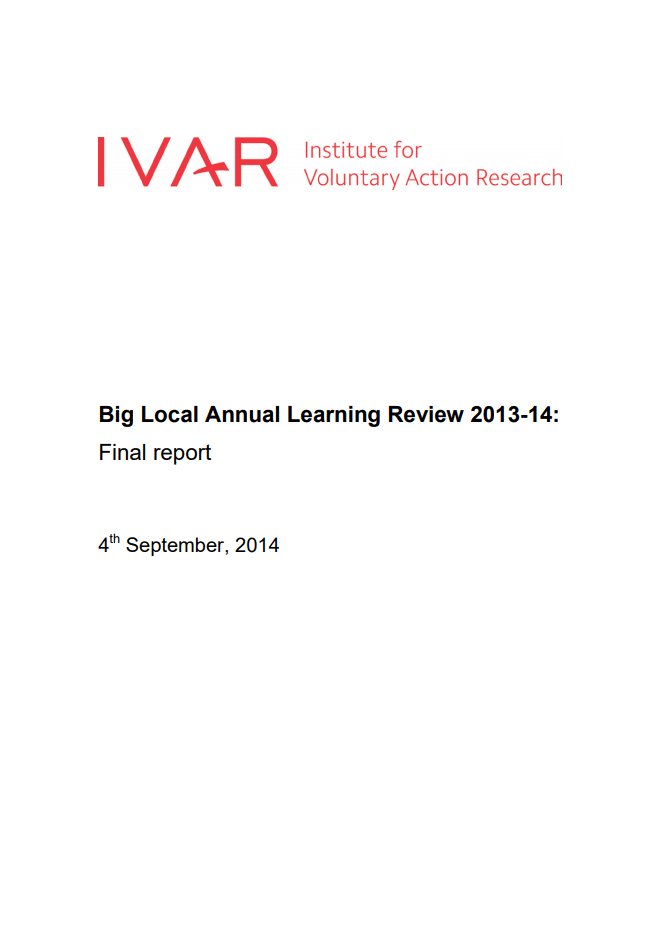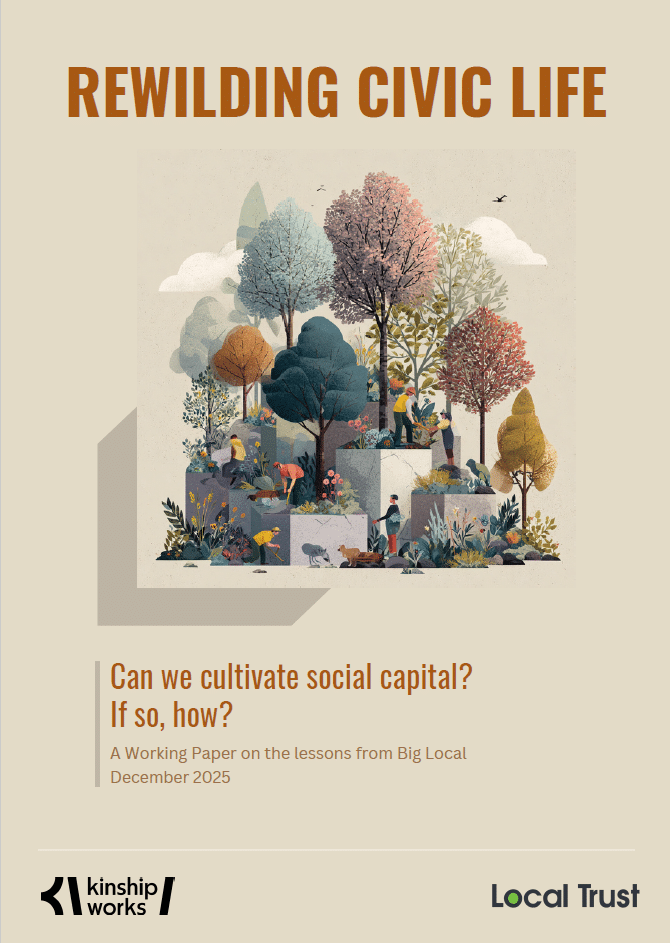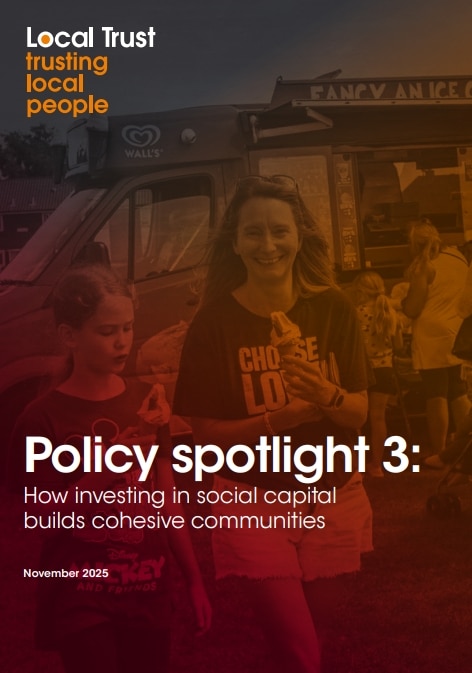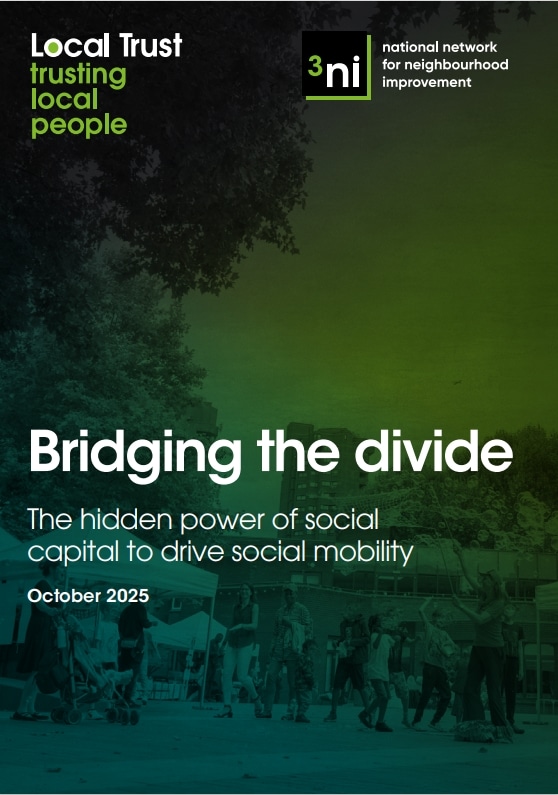Big Local annual learning review 2013 – 2014
Published by IVAR, Institute for Voluntary Action Research

This review sets out the findings of the third annual review of Big Local. It draws on data collected in the year April 2013 to March 2014 by Local Trust and partners in order to report on progress towards the Big Local aim and outcomes, as well as to reflect on what has been
learnt during the year and the implications for the coming years. It is based on records kept by Local Trust and partners during the year and interviews with Local Trust and partners.
As well as reporting on general progress in, this report provides specific data on three
issues identified by Local Trust. These issues are; match funding and in-kind support to Big Local areas, how Big Local areas are accessing learning and support and Big Local partnerships.
A summary of the review is below or you can download the full review at the bottom of the page.
Summary
Overview of funding and activities in Big Local areas
- Local Trust distributed over £5 million to areas during the year. Another £2million was committed to areas whose plans had been endorsed towards the end of 2013-14. In addition £602,500 was awarded to residents as part of Big Local’s Star People scheme to support local enterprise, co-funded by UnLtd.
- This was the first year during which all 150 Big Local areas had been announced and had begun to take part in the programme. By the end of the year all areas had accessed their Getting Started funding and over a quarter had their area plans endorsed by Local Trust.
- Residents are choosing to tackle big issues, and this sometimes involves complex projects in their areas. They are investing in public spaces and community buildings as well as finding ways to make their communities more cohesive through social and self-help activities. They plan to help build their local economy, tackle health and social welfare issues, and improve local housing and transport.
Match funding and in-kind support to Big Local areas
- In 2013-14, many more Big Local areas were beginning to incorporate match funding into their plans. Some areas were using match funding to extend the life and reach of Big Local. For example, one area is using small grants as a match funded pot only, and many areas are attracting external match funding.
- Overall, more than a third of Big Local areas have received or expect to receive match funding and/or in-kind support from other organisations locally. The average amounts are between £3,000 and £4,000 and mainly come from community organisations, local authorities and housing associations.
- At least eight areas report that they will source over £10,000 from multiple or single funders. A few areas were negotiating firm offers of between £20,000 and £50,000.
Access to learning and support
- Over three quarters (77%) of Big Local areas took part in at least one Big Local learning event in 2013-14. The most popular reasons for attending learning events were to network with other residents and to tap into expert knowledge.
- A development in 2013-14 has been an increase in events initiated locally and sub-regionally by reps and residents who wish to learn and work more closely with one another.
- These events have proved popular and have generated useful learning about what residents are likely to take away into their local areas. However, tracking the learning that participants take away from events has continued to prove elusive; a more embedded approach to collecting data post-event may be required to track the development of this learning over the longer term.
- In 2013-14, we saw Big Local areas start to make the transition from planning to delivery. As areas move towards delivery, their learning needs will change and, with them, the kind of support they will want from the programme. Understanding more about how residents use what they learn from Big Local events may help the programme to respond to these changing needs.
Partnerships
- On average, 75% of Big Local partnerships are made up of people who live in the Big Local areas.
- 94% of decision makers on partnerships – i.e. those with voting rights – are residents.
- Big Local partnerships are structured in various ways. Most, however, use a ‘hub and spoke’ model with the ‘spokes’ (or sub-groups) roughly reflecting the different themes in their area plan. Partnerships seemed to organise themselves in more formal ways as they moved further into delivery.
- Many steering groups and Big Local partnerships have welcomed the involvement of local businesses, local authorities and charities to support them in a range of ways – mostly at the early stages of their development.
Emerging themes
Four themes emerged from the review as being particularly relevant to the programme as it moves forward.
- Data: Local Trust and partners may find it useful to refine their data collection in order to meet emerging needs. For example, Local Trust may wish to collect data to distinguish between cash match funding and in-kind support; and assess the impact that learning from events has on areas over the long term.
- Transition: This is the first full year with all three waves operating and a significant number of areas are now moving from planning into delivery. As areas make this transition their learning and support needs will inevitably change.
- Resident-led: As partnerships develop structures that are more formal and move beyond plans into action, they may need to take care to ensure continued engagement and involvement of residents beyond these structures.
- Innovation and impact: As Big Local areas move further into delivery mode it will be important to understand how those involved are taking full advantage of the opportunity that Big Local offers; and how they will seek out new ways of doing things as the programme progresses.



